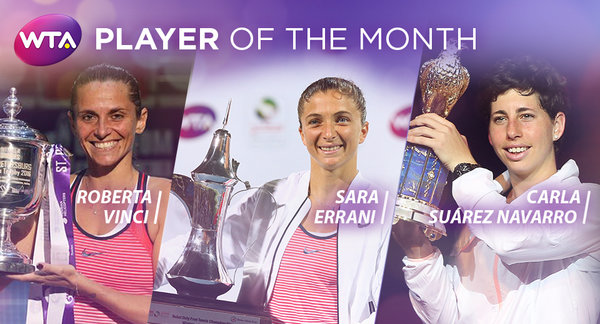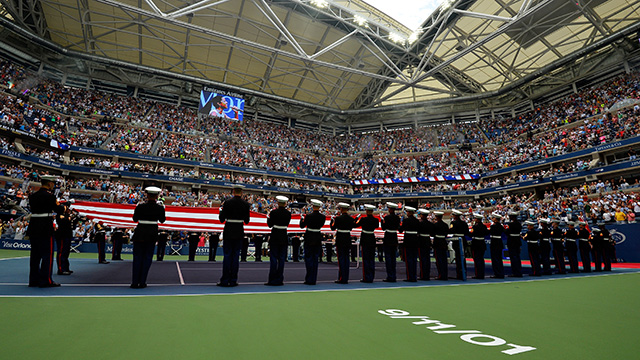NEW YORK, NY, USA – History is on the line on Saturday night as Angelique Kerber looks to mark her coronation as World No.1 by defeating Karolina Pliskova in the final of the US Open.
Before the two face off on Arthur Ashe Stadium, here are 10 points to ponder…
(2) Angelique Kerber (GER #2) vs (10) Karolina Pliskova (CZE #11)
Head-To-Head: Kerber leads Pliskova, 4-3
1) We meet again.
Kerber and Pliskova are making a habit of locking horns at the business end of tournaments. In fact, their past three encounters have all come with the silverware on the line. The most recent of these came just three weeks ago in the Cincinnati, where Pliskova played some brutal tennis to break down Kerber’s defenses for the loss of only four games. This gained a modicum of revenge for a couple of painfully close losses the previous summer in Birmingham and Stanford.
2) Mixed record in finals.
For all Kerber’s success in recent years, she still has a mixed record in finals. Although the German has broken the final hoodoo she suffered earlier in her career – between June 2012 and August 2014 she lost eight of nine – her overall win-loss record stands at 9-14. Pliskova, too, has a history of near misses, winning only six of the 15 she has contested
3) Kerber was eight years old the last time a German appeared in the US Open final.
Kerber is bidding to become the first German woman to win the US Open since her idol Steffi Graf won the last of her five titles, in 1996. The last Czech to reach the final was Helena Sukova, in 1993. Her conqueror? Graf. Hana Mandlikova, in 1985, is to date the only Czech player to go all the way at Flushing Meadows.*
* Czech-born Martina Navratilova won in 1983, 1984, 1986, 1987, but by that time was representing the United States
4) Breaking new ground.
In her 17 Grand Slam appearances prior to arriving in New York, Pliskova had never reached the second week. The last player to reach a major final having never previously been beyond the third round was Amélie Mauresmo at the 1999 Australian Open. Since 1988 Australian Open (when all majors switched to 128-draws) no player has won a Grand Slam on their first venture into the second week. The closest was Serena Williams, who reached the fourth round at Roland Garros in 1999 then won US Open later that same year.
5) Kerber is trying to win multiple majors.
Should Kerber prevail she will become the first player not named Serena to win multiple majors in a calendar year since Justine Henin did so in 2007.
6) On a roll.
Pliskova is currently on an 11-match winning streak. The only time in her career she has gone longer without tasting defeat came way back in 2011, when she won 12 on the spin on the ITF Circuit in the Far East.
This current run came within a point of ending against Venus Williams in the fourth round. Navratilova is the only woman in Open Era to win the US Open title having saved match point – in 1986 she saved three in her semifinal versus Graf.
7) Achieving the Serena-Venus double.
Pliskova is just the eighth woman to beat both Williams sisters at the same tournament, the fourth at a Grand Slam and third at the US Open. The two players to have done so at Flushing Meadows, Justine Henin (2007) and Kim Clijsters (2009) both went on to win the tournament.
8) Kerber not the only one on the rise.
Serena’s semifinal defeat ensured Kerber will become the 22nd player to reach No.1 in the rankings. Pliskova is also on the march too, guaranteeing herself a career-high ranking of No.6 by reaching the final (she would go to No.5 with the title).
Meanwhile, the results in the Big Apple have caused a slight reshuffle on the Road To Singapore leaderboard, with Pliskova leapfrogging Simona Halep, Agnieszka Radwanska, Garbiñe Muguruza, Dominika Cibulkova and Carla Suárez Navarro and Madison Keys into third place; the top two, Kerber and Williams, have both already secured qualification for the BNP Paribas WTA Finals Singapore presented by SC Global.
9) Kerber’s unblemished record.
Kerber has not dropped a set on her way to the final. The last player to win a major without losing a set was Serena at the 2014 US Open.
10) The exclusive leftie club.
Kerber is attempting to become just the third left-hander to win the title. The other three were Evelyn Sears (1907) Navratilova (1983, 1984, 1986, 1987) and Monica Seles (1991, 1992).


























